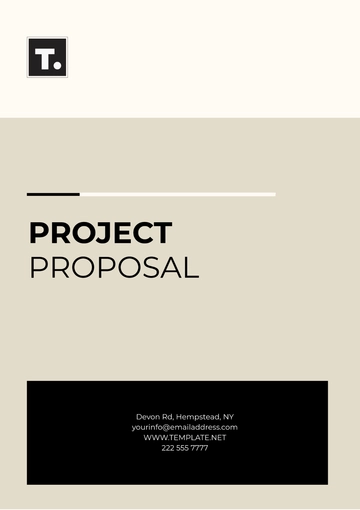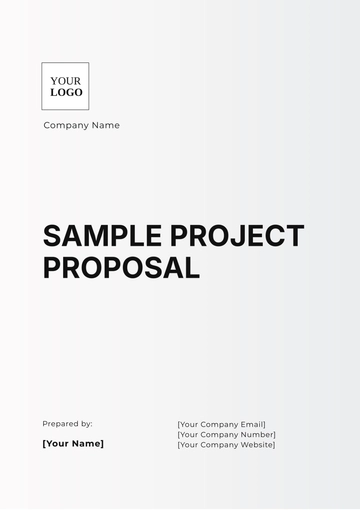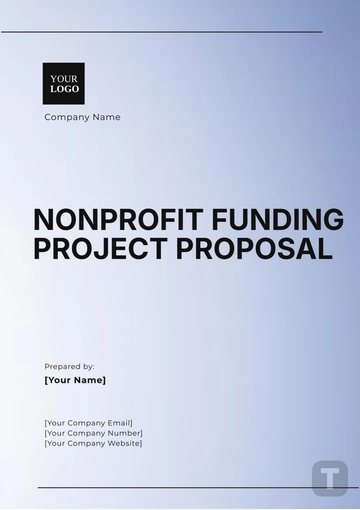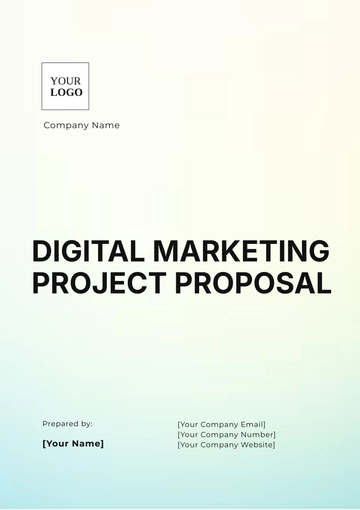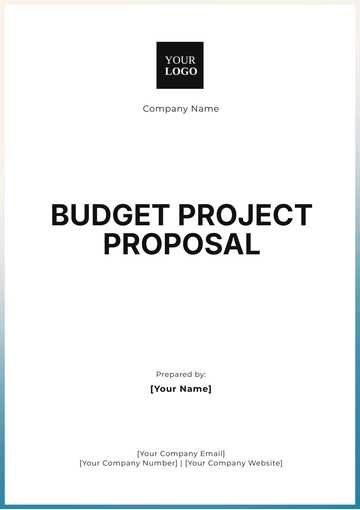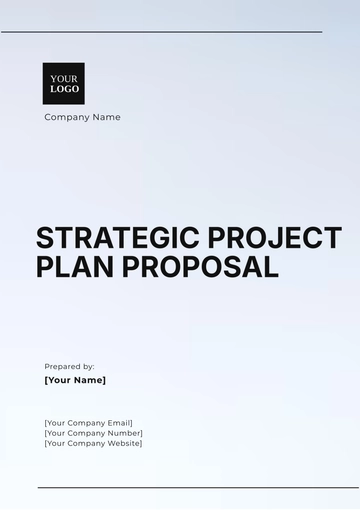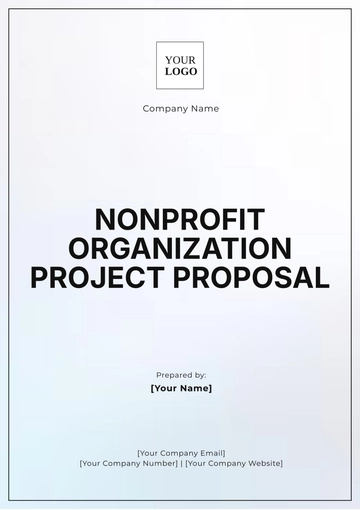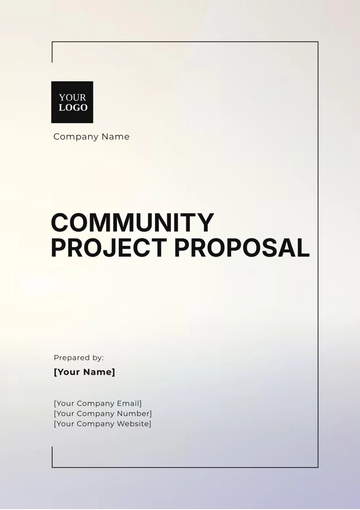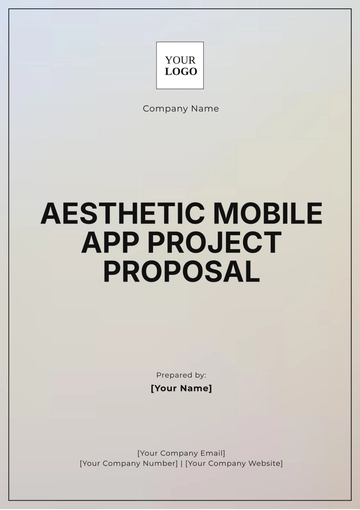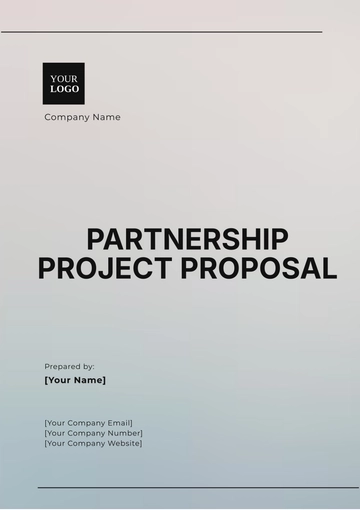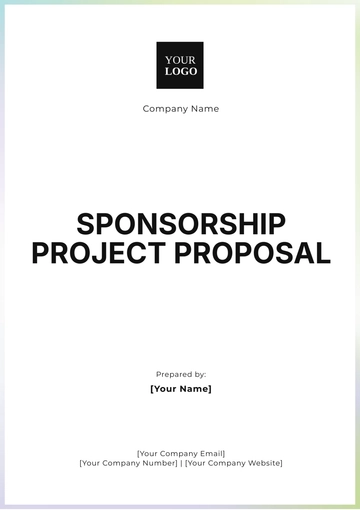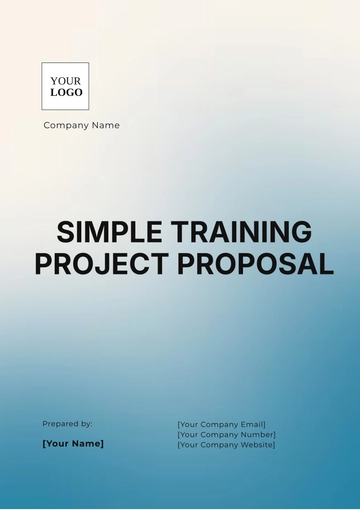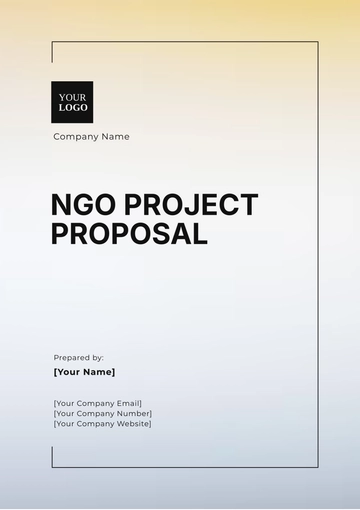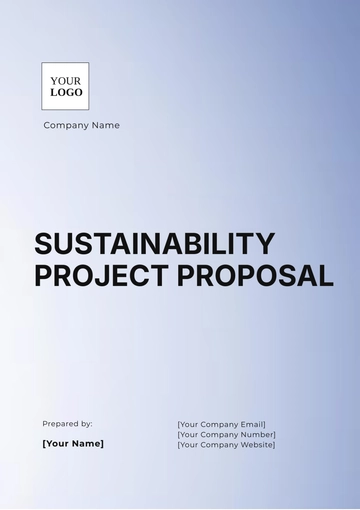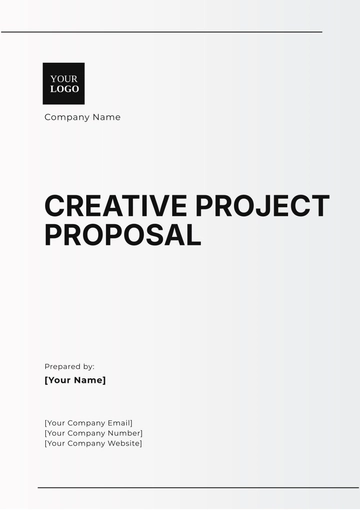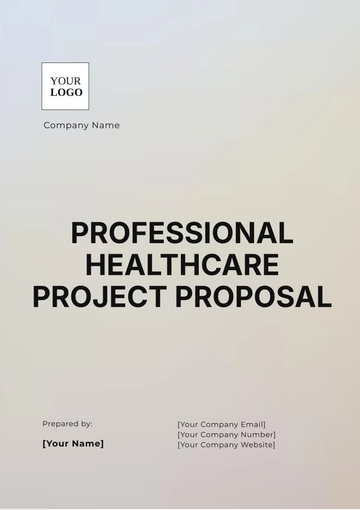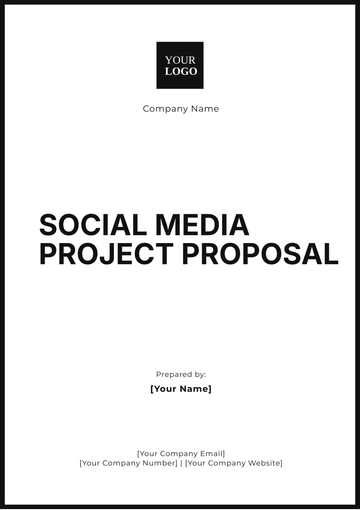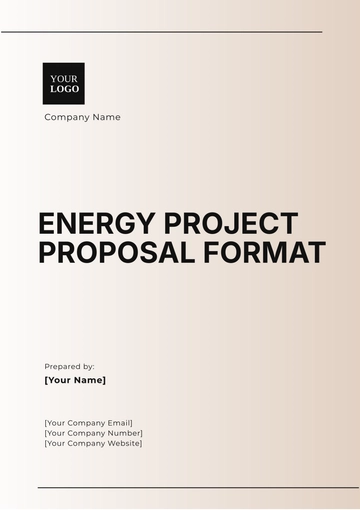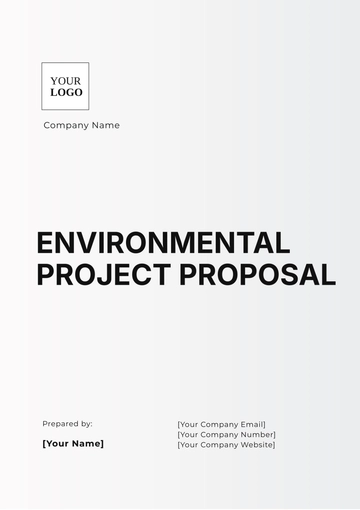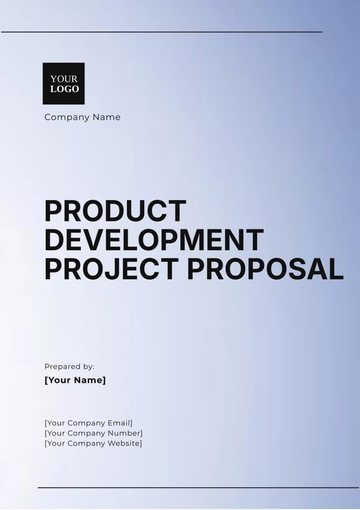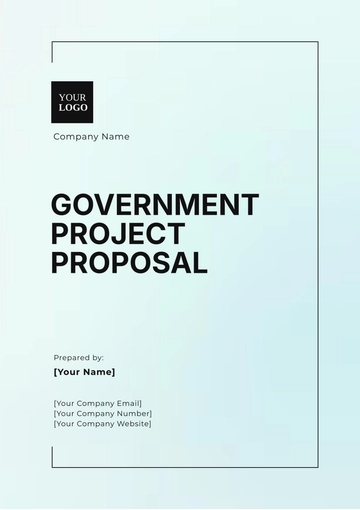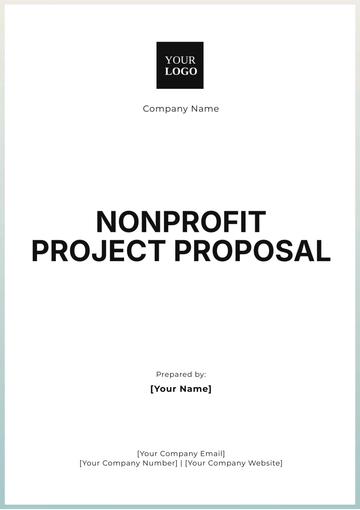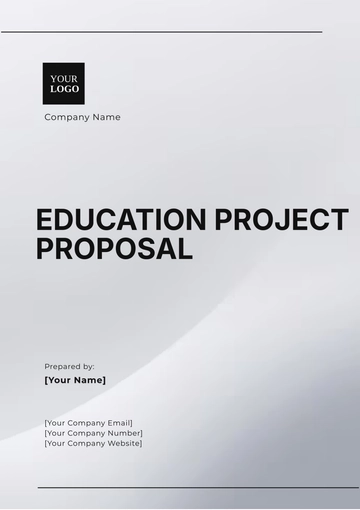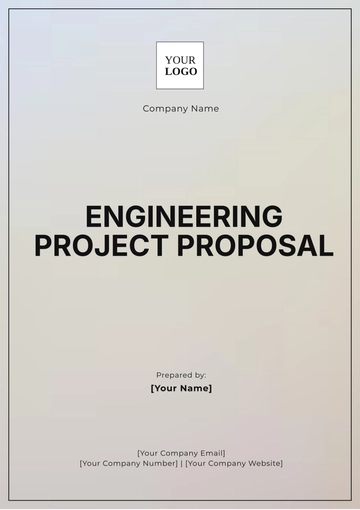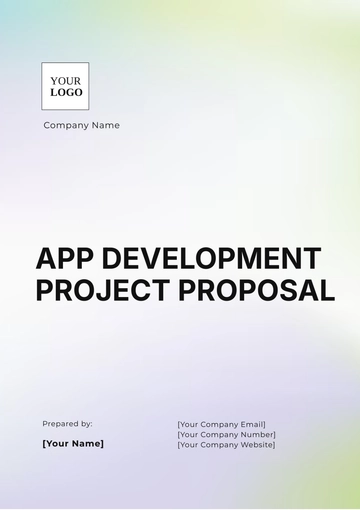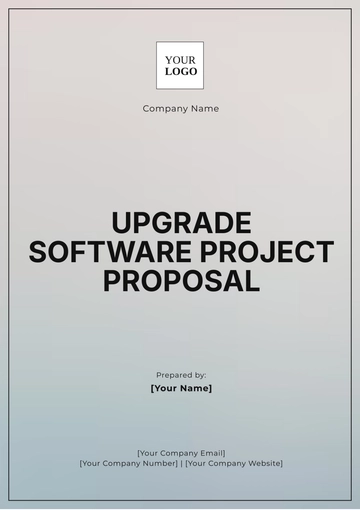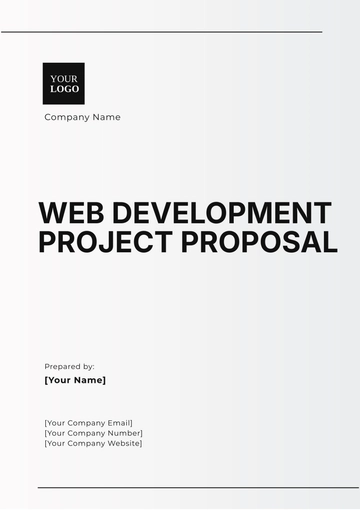Free Government Project Proposal
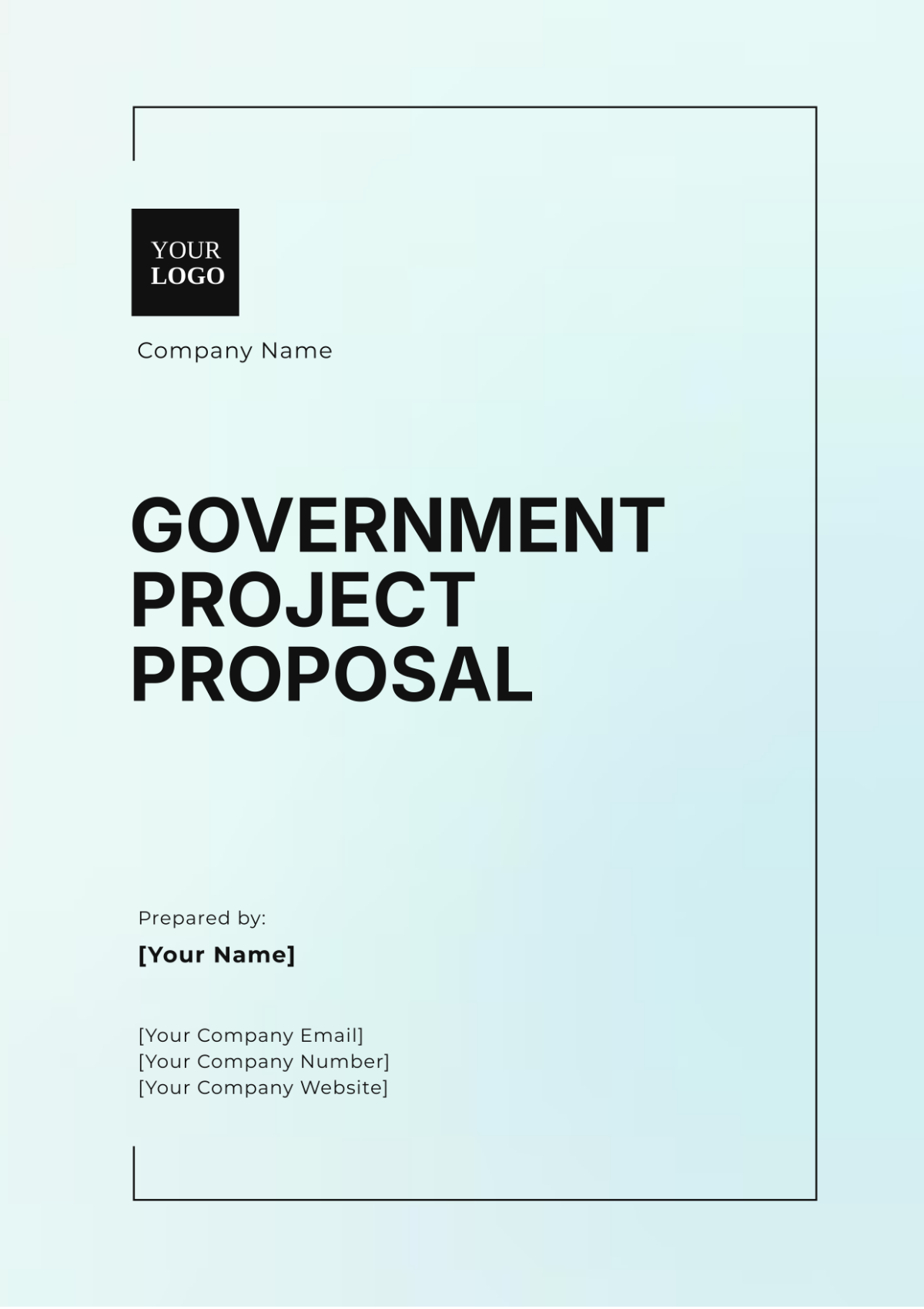
1 Project Overview
The purpose of this proposal is to outline a comprehensive for government projects. This template will serve as a guide for structuring and presenting project details, ensuring consistency, clarity, and completeness across various governmental agencies and project types.
1.1 Goals and Objectives
The primary objectives of this proposal are to:
Establish a standardized format for government project proposals.
Ensure all necessary components of a project are addressed comprehensively.
Facilitate easier review and approval processes.
2 Project Scope
This template covers all phases of a project lifecycle, from initial planning to final implementation and evaluation. It is designed to be adaptable to projects of various sizes and complexities and includes customizable sections to suit specific needs.
2.1 Key Deliverables
Key deliverables of the project proposal template will include:
Project Charter
Project Plan
Risk Management Plan
Stakeholder Management Plan
Implementation Schedule
Evaluation and Review Plan
2.2 Constraints and Assumptions
The following constraints and assumptions have been identified for using this template:
Projects must adhere to government regulations and policies.
Templates require customization to address project-specific needs.
Stakeholder engagement and approval are critical to project success.
3 Project Plan
This section provides a detailed outline of the tasks, timelines, and resources required for completing the project. The plan will follow a phased approach, ensuring all milestones are met in a sequential and organized manner.
3.1 Project Timeline
Phase | Start Date | End Date | Key Milestones |
|---|---|---|---|
Planning | 01/01/2050 | 02/15/2050 | Project Charter Approval |
Design | 02/16/2050 | 04/01/2050 | Design Specifications |
Implementation | 04/02/2050 | 09/30/2050 | Completed Implementation |
Evaluation | 10/01/2050 | 12/31/2050 | Final Report |
3.2 Resource Allocation
The project will require the following resources:
Project Manager
Technical Lead
Business Analyst
Implementation Team
Quality Assurance Team
4 Risk Management
Risk management is a critical component of project success. This section outlines the potential risks and mitigation strategies associated with the project.
4.1 Risk Identification
The following risks have been identified:
Resource availability
Scope creep
Stakeholder engagement
Technical challenges
4.2 Risk Mitigation Strategies
To mitigate the identified risks, the following strategies will be employed:
Ensure clear and consistent communication with stakeholders.
Establish a detailed project scope and adhere to change control processes.
Allocate resources effectively and ensure backup plans are in place.
Conduct regular technical reviews and address issues promptly.
5 Stakeholder Management
Effective stakeholder management is essential for project success. This section outlines the strategies for engaging and managing stakeholder expectations.
5.1 Stakeholder Identification
The key stakeholders for the project include:
Government Agencies
Project Team
End Users
Contractors
Regulatory Bodies
5.2 Communication Plan
The communication plan will involve regular updates, meetings, and reports to ensure stakeholders are informed and engaged throughout the project lifecycle.
Communication Type | Frequency | Audience |
|---|---|---|
Project Meetings | Weekly | Project Team |
Status Reports | Bi-Weekly | Stakeholders |
Executive Briefings | Monthly | Senior Management |
6 Conclusion
In conclusion, this template provides a detailed framework for government project proposals. By following this template, project teams can ensure that all aspects of the project are thoroughly planned and executed, leading to successful outcomes.
- 100% Customizable, free editor
- Access 1 Million+ Templates, photo’s & graphics
- Download or share as a template
- Click and replace photos, graphics, text, backgrounds
- Resize, crop, AI write & more
- Access advanced editor
Prepare professional government project proposals effortlessly with Template.net's Government Project Proposal Template. This customizable and editable template ensures clear communication of objectives, budgets, and timelines. Editable in our AI Editor Tool, it's easy to tailor to any government project requirements.
You may also like
- Business Proposal
- Research Proposal
- Proposal Request
- Project Proposal
- Grant Proposal
- Photography Proposal
- Job Proposal
- Budget Proposal
- Marketing Proposal
- Branding Proposal
- Advertising Proposal
- Sales Proposal
- Startup Proposal
- Event Proposal
- Creative Proposal
- Restaurant Proposal
- Blank Proposal
- One Page Proposal
- Proposal Report
- IT Proposal
- Non Profit Proposal
- Training Proposal
- Construction Proposal
- School Proposal
- Cleaning Proposal
- Contract Proposal
- HR Proposal
- Travel Agency Proposal
- Small Business Proposal
- Investment Proposal
- Bid Proposal
- Retail Business Proposal
- Sponsorship Proposal
- Academic Proposal
- Partnership Proposal
- Work Proposal
- Agency Proposal
- University Proposal
- Accounting Proposal
- Real Estate Proposal
- Hotel Proposal
- Product Proposal
- Advertising Agency Proposal
- Development Proposal
- Loan Proposal
- Website Proposal
- Nursing Home Proposal
- Financial Proposal
- Salon Proposal
- Freelancer Proposal
- Funding Proposal
- Work from Home Proposal
- Company Proposal
- Consulting Proposal
- Educational Proposal
- Construction Bid Proposal
- Interior Design Proposal
- New Product Proposal
- Sports Proposal
- Corporate Proposal
- Food Proposal
- Property Proposal
- Maintenance Proposal
- Purchase Proposal
- Rental Proposal
- Recruitment Proposal
- Social Media Proposal
- Travel Proposal
- Trip Proposal
- Software Proposal
- Conference Proposal
- Graphic Design Proposal
- Law Firm Proposal
- Medical Proposal
- Music Proposal
- Pricing Proposal
- SEO Proposal
- Strategy Proposal
- Technical Proposal
- Coaching Proposal
- Ecommerce Proposal
- Fundraising Proposal
- Landscaping Proposal
- Charity Proposal
- Contractor Proposal
- Exhibition Proposal
- Art Proposal
- Mobile Proposal
- Equipment Proposal
- Student Proposal
- Engineering Proposal
- Business Proposal
